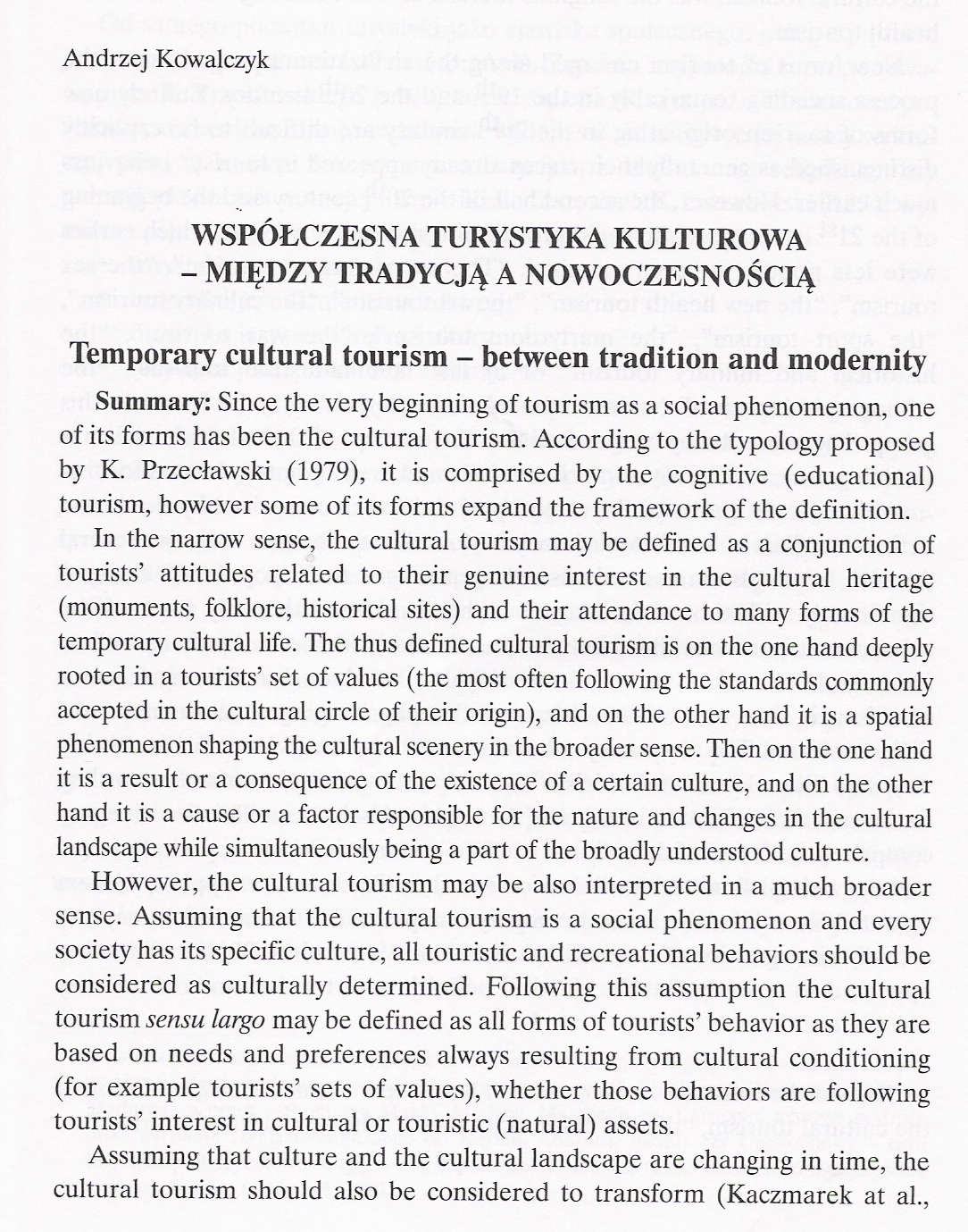skanuj0002 (428)

Andrzej Kowalczyk
WSPÓŁCZESNA TURYSTYKA KULTUROWA - MIĘDZY TRADYCJĄ A NOWOCZESNOŚCIĄ
Temporary cultural tourism - between tradition and modernity
Summary: Since the very beginning of tourism as a social phenomenon, one of its forms has been the cultural tourism. According to the typology proposed by K. Przecławski (1979), it is comprised by the cognitive (educational) tourism, however some of its forms expand the ff amework of the definition.
In the narrow sense, the cultural tourism may be defined as a conjunction of tourists’ attitudes related to their genuine interest in the cultural heritage (monuments, folklore, historical sites) and their attendance to many forms of the temporary cultural life. The thus defined cultural tourism is on the one hand deeply rooted in a tourists’ set of values (the most often following the standards commonly accepted in the cultural circle of their origin), and on the other hand it is a spatial phenomenon shaping the cultural sceneiy in the broader sense. Then on the one hand it is a result or a consequence of the eristence of a certain culture, and on the other hand it is a cause or a factor responsible for the naturę and changes in the cultural landscape while simultaneously being a part of the broadly understood culture.
However, the cultural tourism may be also interpreted in a much broader sense. Assuming that the cultural tourism is a social phenomenon and every society has its specific culture, all touristic and recreational behaviors should be considered as culturally determined. Following this assumption the cultural tourism sensu largo may be defined as all forms of tourists’ behavior as they are based on needs and preferences always resulting from cultural conditioning (for example tourists’ sets of values), whether those behaviors are following tourists’ interest in cultural or touristic (natural) assets.
Assuming that culture and the cultural landscape are changing in time, the cultural tourism should also be considered to transform (Kaczmarek at al.,
Wyszukiwarka
Podobne podstrony:
63314 skanuj0012 (250) 16 ANDRZEJ KOWALCZYK (7) Turystyka kulturowa często jest up
skanuj0037 (59) 40 ANDRZEJ KOWALCZYK turystyką kulinarną jest ona przede wszystkim
skanuj0090 (20) DYLEMATY WIEJSKIEJ TURYSTYKI KULTUROWEJ 93 wotne w stosunku do miasta. Rezultatem ro
skanuj0112 (13) DYLEMATY WIEJSKIEJ TURYSTYKI KULTUROWEJ 115 Literatura Altkorn J., 2002, Marketing w
skanuj0092 (19) DYLEMATY WIEJSKIEJ TURYSTYKI KULTUROWEJ 95 dawne oraz - przede wszystkim - z element
więcej podobnych podstron